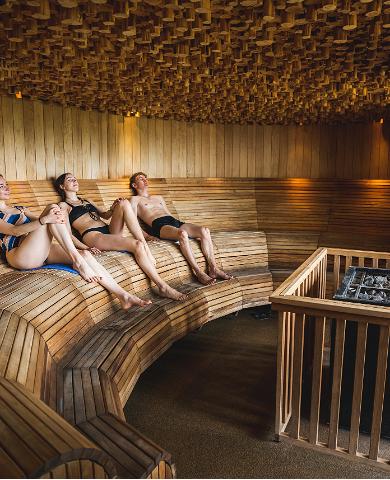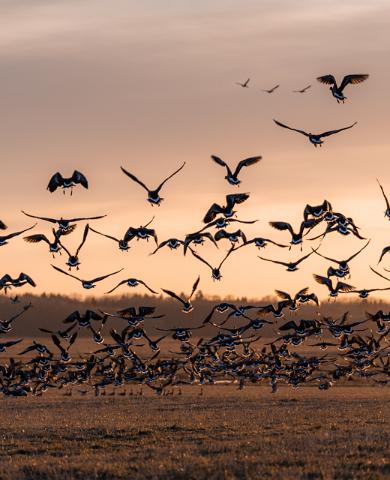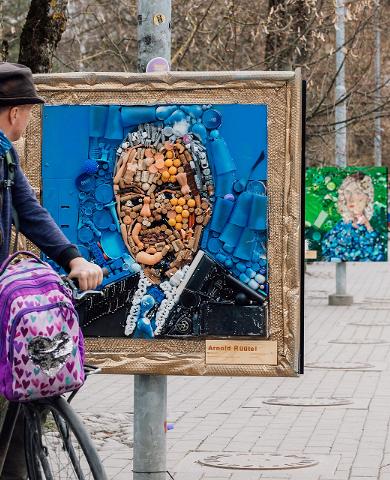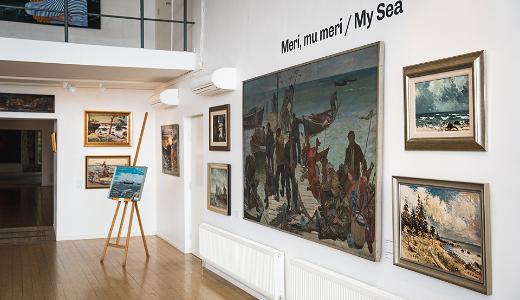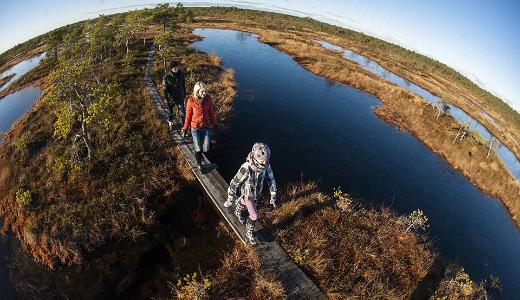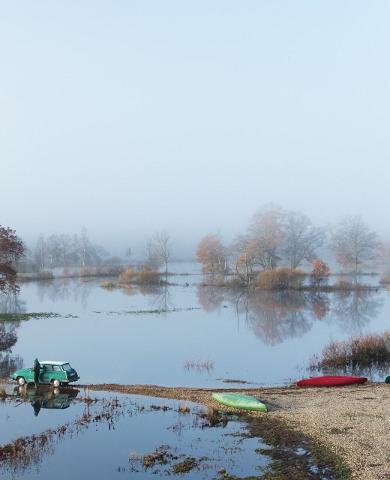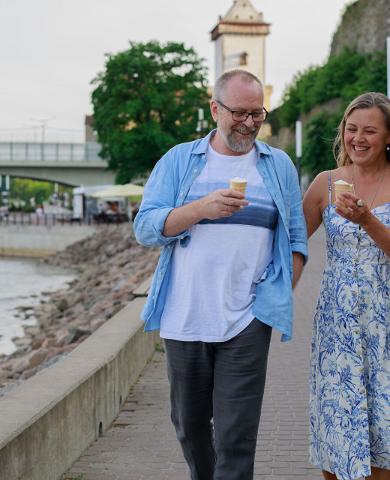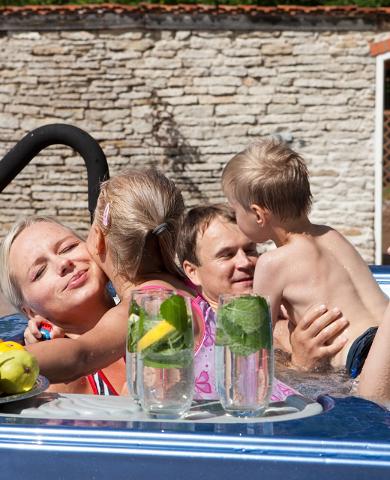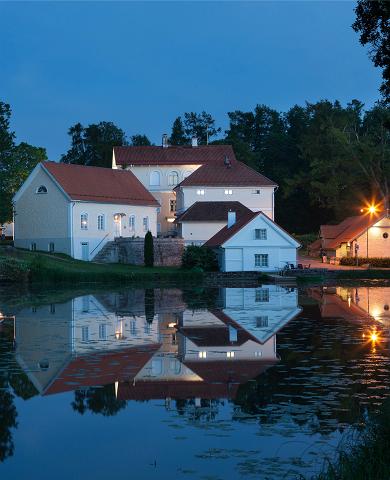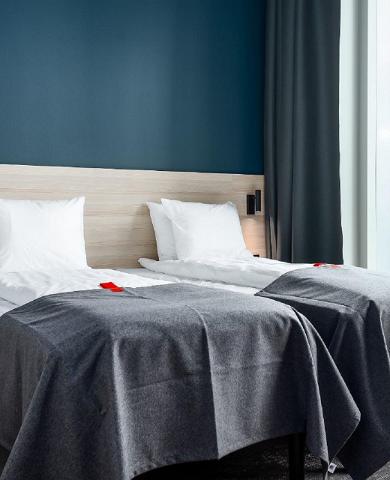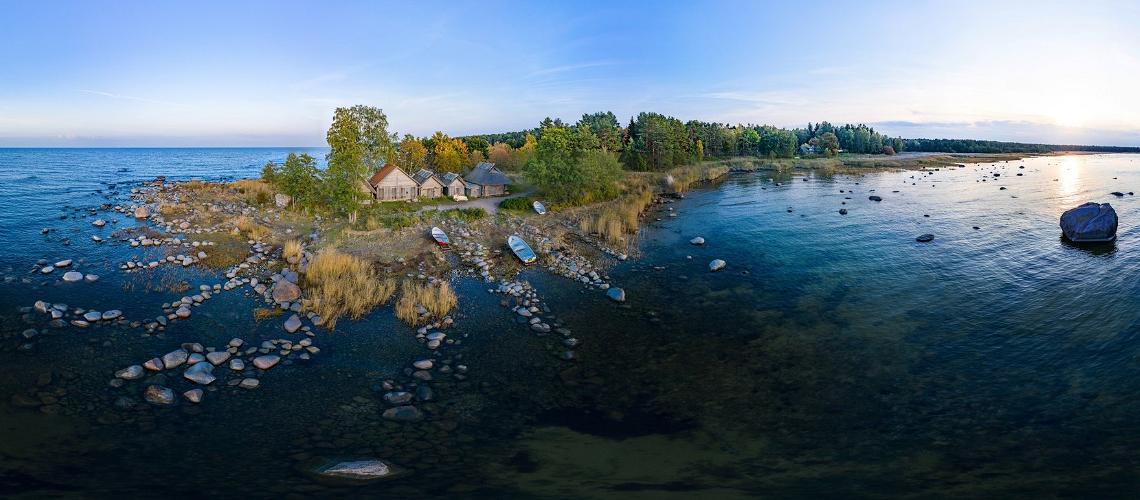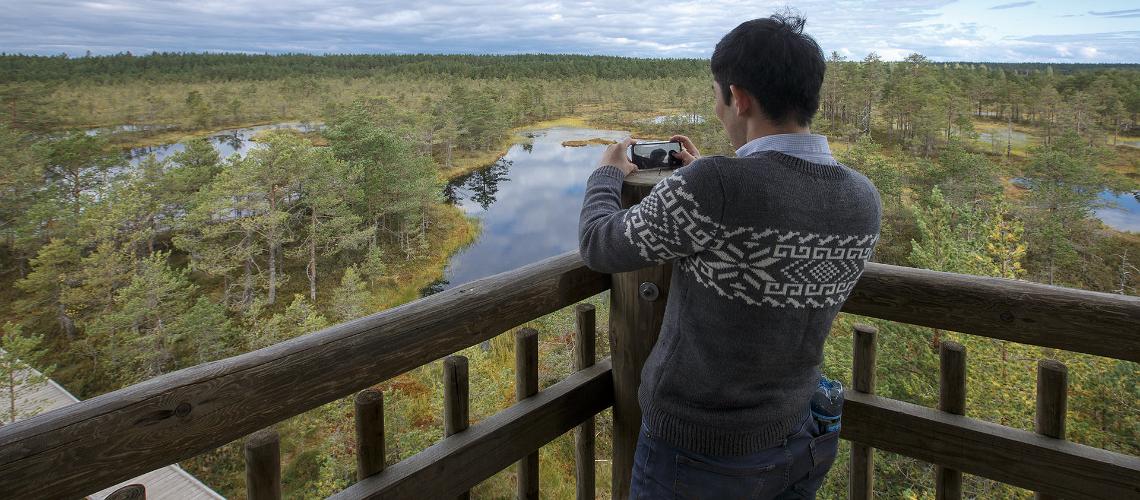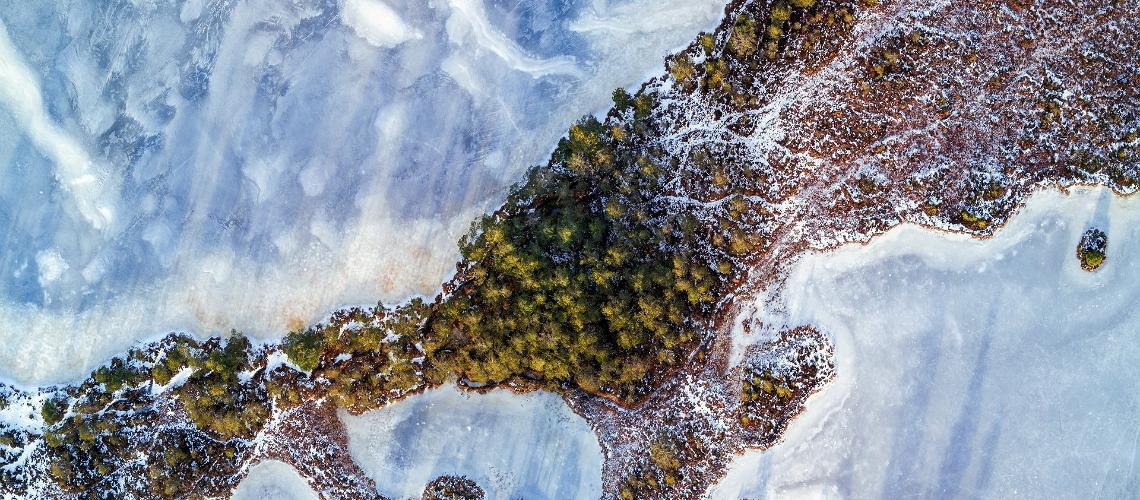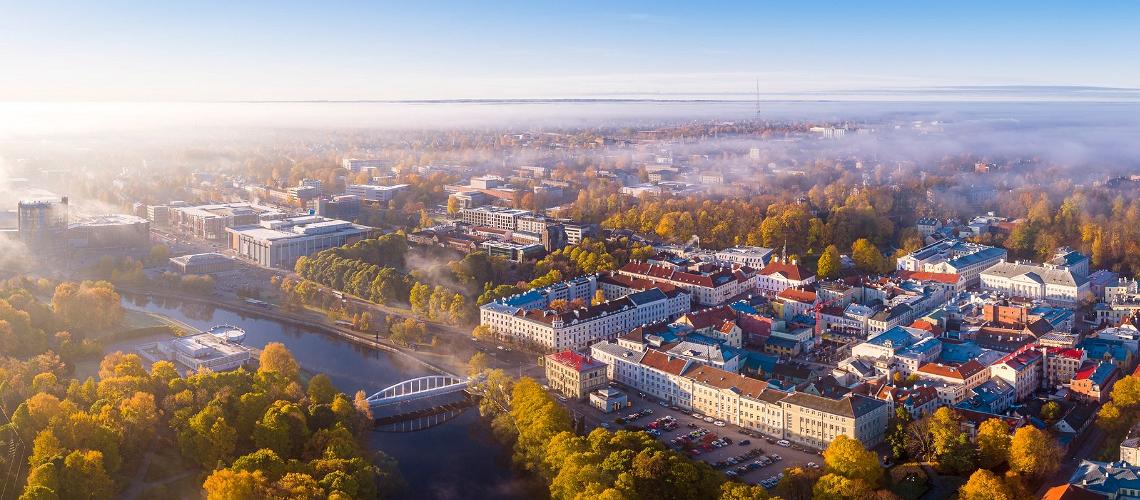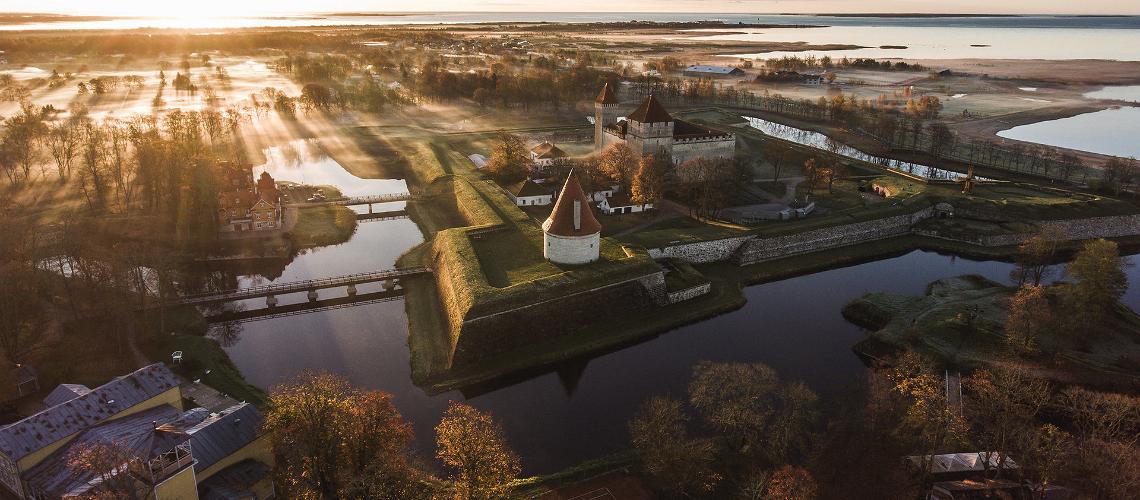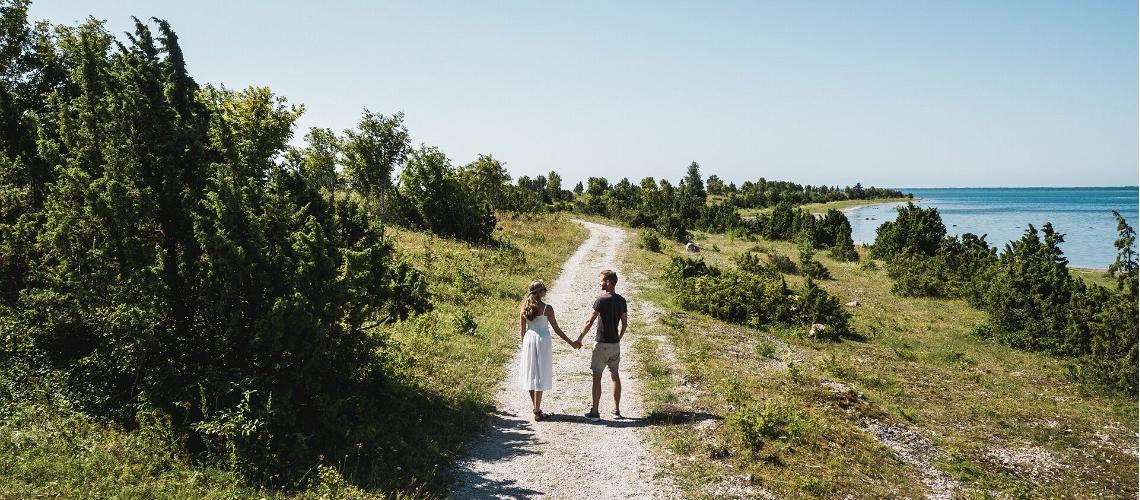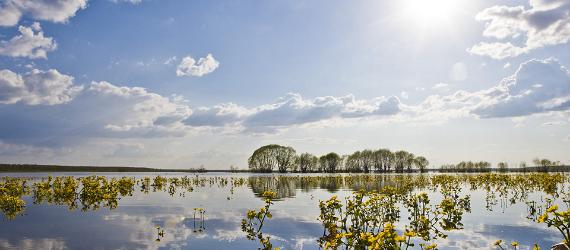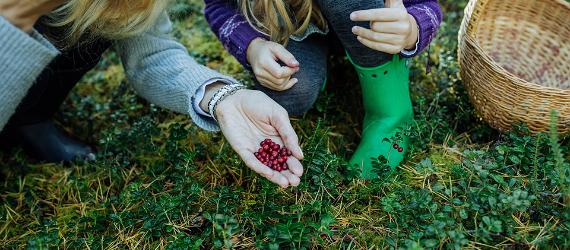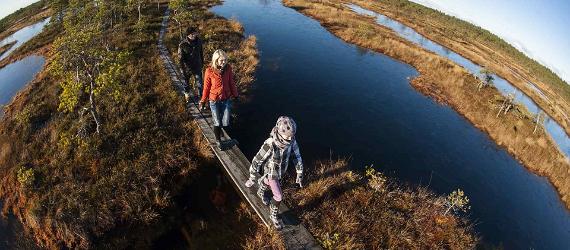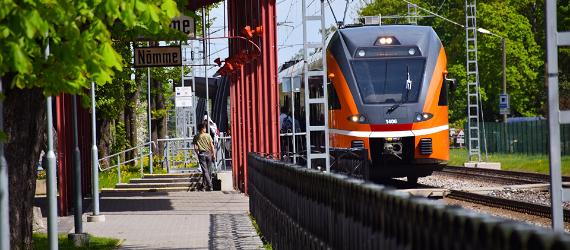As one of the top sustainable travel destinations in Europe, anyone looking for an eco-friendly travel experience can find a huge range of options in Estonia. With more than 50% of the country covered by forest and nature, the country is a paradise for the green-minded traveller.
A sustainable tour around Estonia gives you the chance to experience nature up close. Hike through the expansive forests or traverse the wetlands with bog-shoes. Estonia is a prime location for birdwatching, and its forests are also home to lynxes, wolves, and brown bears, so keep your eyes peeled and your binoculars ready!
Take in thatched roofs, wooden windmills, and quaint fishing villages while you enjoy the seaside landscapes and islands off the coast. Whether you prefer to unwind in nature, relax in a sauna, or discover the rich history of Estonia, you will find sustainable destinations to enjoy all around the country.
Getting Around
Due to Estonia's compact size, you won't have to worry about spending too much time on transport. The country has a large network of bike trails and affordable trains and buses. For nature lovers, most national parks and green spaces can be reached by bus. And, of course, you need a ferry to reach the islands.
Day 1: Lahemaa
Lahemaa National Park in North Estonia should be your first stop on a sustainable tour of Estonia. Lahemaa is one of Europe's largest national parks. Founded in 1971, it is also the oldest national park in the area that was once the former Soviet Union. During its 50-year history, Lahemaa has always been managed with sustainability in mind. As a result, it has held the EUROPARC certificate for sustainable tourism since 2019.
Lahemaa has the perfect infrastructure for nature tourism and is known for its wilderness and beautiful landscapes covered in wetlands, forests, preserved flora and fauna as well as some of Estonia's most impressive manor houses.
You can take a number of different trails to explore the park. One of the main highlights and top recommendations is Viru Bog, where you can walk 3.5 km to reach an observation tower to get a bird's-eye view of the marshes and wetlands.
There are also four manor houses in the area that you can visit - Palmse Manor, Vihula Manor, Kolga Manor, and Sagadi Manor. The easiest to visit is Kolga Manor, the closest to the bus station that brings you to Lahemaa.
You can also take another bus, and in less than an hour from Kolga, you will reach other points of interest in the region, such as Sagadi Manor or the small fishing village of Altja, with its wooden houses perched along the beach on the Gulf of Finland.
How to get there
You can take a bus from Tallinn to different spots according to your interests.
Peatus Estonia or Gobus AS or SEBE : Tallinn (Kivisilla) – Kolga
Duration: 1h
Approximate cost: 2€ – 5€
Day 2: Rakvere
Heading east from Lahemaa National Park, the second stop on our sustainable journey is Rakvere, a smart city where you can enjoy different aspects of Estonian culture, history, and nature.
The city of Rakvere strives for climate neutrality. It's at the forefront of Estonia's energy-efficient renovation for multi-storey buildings. Reflecting the city's commitment to sustainability, the Rakvere Government is located in a Smart House, Estonia's first near-zero energy public building.
Walking through Rakvere, you're sure to end up on Pikk Street. The name is Estonian for long street, and the road earns its name as the city's longest street. In 2021, the renovation of Pikk Street was completed, so today, it's a modern pedestrian-friendly promenade that showcases some of the best sites in Rakvere. Here, you'll find a space that invites pedestrians with special street furniture, shops, and plenty of greenery. Walking more in the city, you'll certainly spot the sculpture 'Young man on bicycle listening to music' in Central Square. The sculpture was erected in honour of Arvo Pärt, the Estonian composer who created the tintinnabuli style of music.
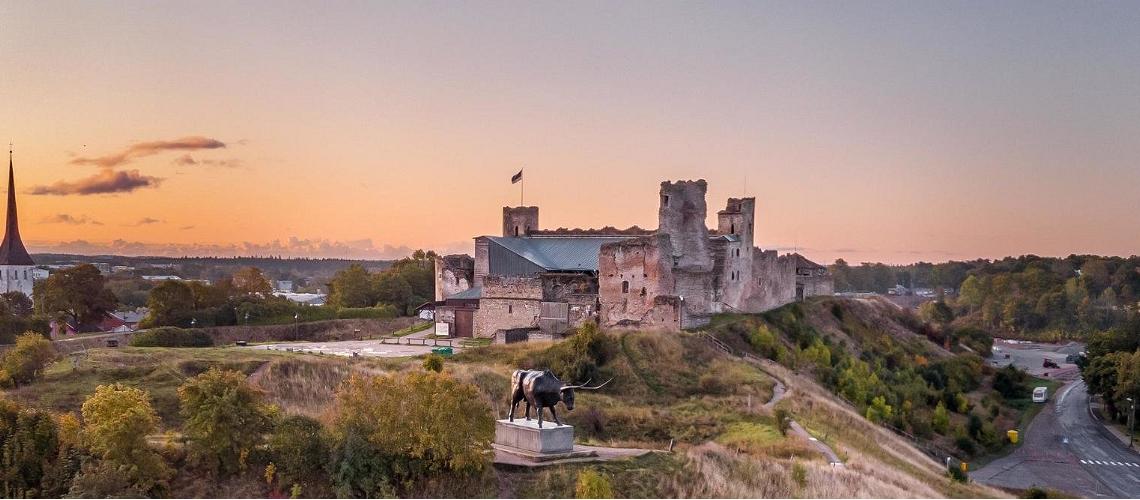
Rakvere Castle
Visit Rakvere's castle to get a feeling for the city's history
Photo by Simo Sepp, Visit Estonia
In the city centre, you can see Rakvere Castle, a circular fortress from the 14th century. Inside, you'll be immersed in the lives of the Knights of the Livonian Order. This includes games, performances, and activities at the medieval smithy and an old-style carpenter's workshop and clay chamber. You'll even see sheep and goats wandering about the grounds, just as they would have in the past. Climb to the top of the castle for a great view of the city and the surrounding countryside.
Not far from the castle, you can see the largest open-air museum in Estonia, the Rakvere Vallmägi Open Air Centre. Located on nearly 7 hectares in the heart of the city, this has been the traditional venue for concerts, Midsummer events, and song and dance festivals. The surrounding environment has more than 17,000 plants. This includes 85 types of trees, shrubs, and perennials that have been selected to reduce urban noise.
Although Rakvere is a city, it has natural protected areas known as Rakvere Tammik. The intention behind the protected area is to preserve biological diversity and the natural landscape with numerous protected, rare and endangered species growing in the area. These spaces include the Palermo Forest, where you'll find health trails great for recharging yourself in nature. Manor Park is also located not far away with its ancient lime sedge ponds.
How to get there
Gobus AS : Altja – Rakvere (Teater)
Duration: 45mins
Approximate cost: 1€ – 3€
Day 3: Järvamaa
The next destination is Järvamaa, a county sitting in the middle of Estonia. Järvamaa is rich in wilderness, with 14 nature reserves and 10 conservation areas. As such, you can explore the open fields, wild bogs, and old-style villages to bring you a sense of calm and relaxation.
The main town in Järva County is Paide, a pleasant lunch stop and a great jumping-off point to see nearby nature. Take a walk through the town's central square, which has remained largely intact since the Middle Ages. There, you'll find the ruins of a castle and an impressive former rampart tower. Since all the most important historical buildings have a plaque with some information, photos, and QR codes, you can be your own guide while strolling through Old Town and learning about the local history.
For a bite to eat, Paide's best-known café, Wabakohvik will serve you a vegetarian lunch and some heavenly cakes. If you come by in August, you can see the Opinion Festival, which fosters a public debate culture and civic education. As such, it's known in Estonia as the benchmark event for opening discussions on environmentally friendly policies.
Outside of Paide, there's plenty to see, do, and experience. After boarding the local bus 10 in front of the Holy Cross Church on Paide's main square, you can see Kirna Manor in about 10 minutes. Known for its park and tulip fields, Kirna Manor is considered among the top places in the world with a connection to 'ancient power.' After a healing walk in the park, you can enjoy the atmosphere at the manor café, which serves mostly plant-based food from locally grown ingredients.
Proudly carrying the title of Estonia's spring capital, Türi features countless beautiful gardens. Naturally, the locals are proud of their green thumbs. Every spring, the town hosts the Türi Flower Fair, renowned nationwide for gathering schools, gardeners, and plant lovers from far and wide.
You can travel between Paide and Türi by bike. This will take you off the main road and through the rolling hills.
How to get there
Estonia's calming and rustic heart is a perfect destination to explore by bike. However, if you only have one day to spare, it's best to come by bus.
Long-distance bus: Rakvere bussijaam – Paide bussijaam
Duration: 1h 30
Approximate cost: 4€ – 9€
Day 4: Tartu
Taking a bus for just an hour and a half, you will arrive in the creative and vibrant city of Tartu. Tartu is the second-largest city in Estonia and has a reputation as the nation's intellectual and cultural capital, a technology hub, and a "smart city." Maintaining a clean environment and green city standards have been Tartu's focus for decades, as the city has always tried to make environmentally conscious decisions regarding its nature, industry, infrastructure, and the health of its citizens.
Tartu is indeed the historical and cultural heart of the country that values traditions and heritage. Many historically and culturally important landmarks and events have been, and continue to be, created and initiated in Tartu. For example, the University of Tartu (Estonia's first university) was founded in 1632. Likewise, Tartu is also home to the National Theatre of Estonia, the first Estonian song festival, and the Estonian National Museum.
Tartu is very diverse in terms of architecture, with each of its districts having a different feeling and style. For example, the historic and majestic Old Town stands out with eye-catching historic architecture. At the same time, you should see the districts of Karlova and Supilinn (Soup Town), which have their own wooden houses with a bohemian vibe. If you want to experience some of Tartu's culture for yourself, you can check out some of the exhibitions at the Estonian National Museum or one of the many music festivals.
One of the best and greenest ways to explore Tartu is by walking along the Emajõgi River and through the city's streets. However, if you want to move more quickly, you can take a city bus fueled by locally produced green gas or the Smart Bike Share. The system has 93 stations all over the city and 750 bicycles, of which around 500 are electric. Tartu Smart Bike Share and biogas buses ranked second at the Green Destinations Stories Awards 2020 in the Environment and Climate category. Using the same card, you can combine bus travel and Smart Bike Share.
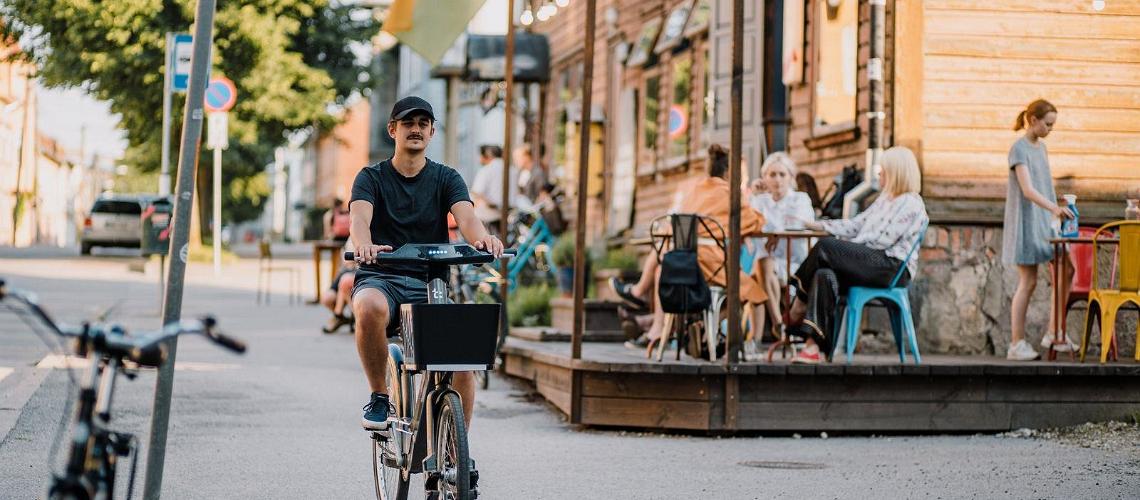
Biking in Tartu
One of the best and greenest ways to see the city
Photo by Mana Kaasik, Visit Estonia
Another way to get around is the Emajõgi River, which snakes through the city. Enjoy a one-of-a-kind opportunity by sailing on a wooden trading barge called the Jõmmu. In Estonia, these wooden riverboats were used to sail the inland waters from the 14th to the middle of the 20th century. The Jõmmu was built according to the historic barges that sailed in the region and is now the world's only example of its kind. To learn about its history, visit the Barge House (Lodjakoda), which opened in October 2020. Here visitors can see how the barges were built and what they were used for, try out old-fashioned barge work firsthand, and craft a barge model for yourself.
No matter how you explore Tartu, you may notice that the city is like a canvas with different stories told via street art. Tartu is one of the few cities in Europe where street art is created in cooperation with city authorities. One great way to discover the city's street art is to stroll in the Smartovkas district, which was built in the 1960s and today has the most energy-efficient reconstructed buildings in Estonia. Another piece of advice is to check out art spots under bridges.
Tartu will be the European Capital of Culture in 2024, with the main topic being "Arts of Survival", where the programme focuses on sustainability by actively promoting biodiversity, organic food, handicraft culture, and re- and upcycling. The main goal is to clean up the land and water and empower people through nature education and urban gardening.
If you want green space, visit Toome Hill and the Tartu Botanical Garden in the city centre. There are also numerous parks where special attention is put on increasing biodiversity. This all enriches urban nature in Tartu and offers possibilities to enjoy a green holiday without even leaving the city.
How to get there
M.K. Reis-X : Paide – Tartu (Pauluse)
Duration: 1h30
Approximate cost: 6€ – 11€
Day 5: Pärnu
Our fifth stop on this sustainable tour is the seaside city of Pärnu in southwest Estonia. Green Destinations, an international organisation focusing on sustainable tourism, featured Pärnu on its list of the top 100 sustainable destinations in the world. In Estonia, Pärnu is known as the summer capital due to its numerous events and festivals, especially in the summer. For example, you can check out the music at Häädemeeste Hää and the Kabli Sunset Festival, as well as many other music festivals in July.
Of course, Pärnu offers options to forest lovers. From the city, you can easily reach two national parks, Sooma and Matsalu. Both have numerous hiking trails and towers for bird-watching.
If you're feeling extra adventurous, the island of Kihnu is only a ferry ride away. The island of Kihnu has been part of the UNESCO Oral and Intangible Heritage of Humanity List since 2003.
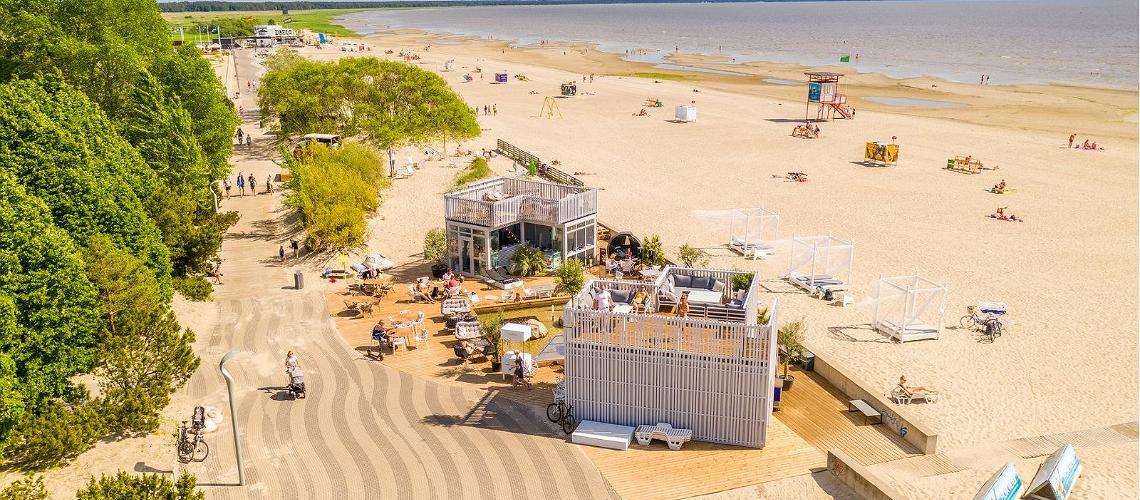
The Pärnu Promenade
Renovated and ready, the beach promenade is a summer hotspot.
Photo by Visit Estonia
It's worth noting that Pärnu holds the title of summer capital for a reason. The city can be crowded during the warmer months with all the festivals, events, and the great climate. If you want to escape the crowd and find some alone time, visit Pärnu outside of summer. Aside from peak season, the seaside city allows you to walk along 1.5 km of uninterrupted coastline. Let your feet carry you to Pärnu Jetty, which has always been one of the city's most popular spots, or walk the Pärnu coastal meadow hiking trail. You just might see the urban cows grazing by the sea!
How to get there
Luxexpress or Gobus AS or SEBE : Tartu – Pärnu
Duration: 2h40
Approximate cost: 7€ – 12€
Days 6 & 7: Saaremaa and Hiiumaa
For the last destination, you can visit the islands of Saaremaa and Hiiumaa if you want to keep exploring green Estonia. Both are true gems waiting to be discovered.
Saaremaa is the biggest island in Estonia. The island of Saaremaa and other West Estonian islands belong to the UNESCO biosphere program area MAB (Man and the Biosphere).
The ferry ride from the mainland to the island takes about 28 minutes, giving you enough time to relax and enjoy the trip. Keeping sustainable travel in mind, a hybrid ferry is one of the two ferries that run between Muhumaa and the mainland. This is estimated to reduce diesel fuel by 20% and CO2 emissions by 1,600 tonnes. In addition, the amount of underwater noise and vibration is reduced in order to create a better living environment for seals and fish.
You will drive through Muhumaa, the third biggest island of Estonia, before entering Saaremaa. Your final destination is the island's largest town, Kuressaare.
There, you can visit the island's 14th-century castle and stroll around the city. You will probably be surprised by street performances or shows of folk dancers dressed in traditional clothing.
You can take local transportation to see more of the island's impressive and diverse nature. Local buses are free for everyone, including tourists, and 80% run on CNG. Take a hike on some of the island's 35 kilometers of trails and discover island nature for yourself.
Saaremaa is particularly well known for its home-brewed beers and smoked fish. The forest and sea play an important role in the islanders' diet, and the food of many cafes and restaurants comes from local farms. Usually, the name of the farm where the raw ingredients come from is on the menu. When you stop by to eat somewhere, you can recognise local products and services by the label saying Ehtne, the Estonian word for authentic. This guarantees that a product has been entirely or largely produced and/or grown on the islands.
How to get there
Gobus AS : Pärnu – Kuressaare
Duration: 3h
Approximate cost: 7€ – 11€
From Saaremaa, you can stop at Estonia's second-largest island, Hiiumaa. It's quieter with more of an island culture than Saaremaa so you can find plenty of solitude here. Due to the island's inhabitants knowing how to live harmoniously with the environment, Hiiumaa's nature is well-preserved. In terms of sustainability, Hiiumaa is on the 2020 list of the 100 most sustainable destinations in the world.
Hiiumaa has several landscapes to enjoy, from beaches to forests. Along the coastline, you can visit beaches such as Tõrvanina and Luidja. For an experience with nature, we recommend Sääretirp on the Kassari Peninsula, which remains an ideal spot for bird watchers. Aside from nature, Hiiumaa has numerous historical lighthouses, such as Tahkuna, Ristna, and Kõpu.
Coming to Hiiumaa in the winter provides a different way of travel since you can take the ice road via car rather than the ferry.
How to get there
Kihnu Veeteed: Triigi – Sõru
Duration: 2h
Approximate cost: 2€ – 4€
If you have additional time to explore Estonia or are looking for more stops to add to the itinerary, check out these other sustainable destinations recommended by Green Traveler.



